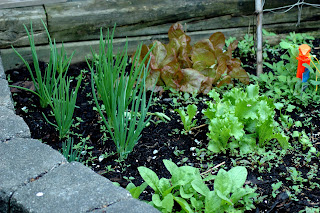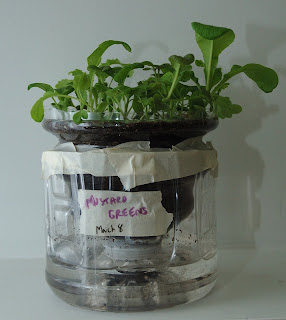Here are updates on most of the things I'm growing and I'll update my harvest data (sidebar) in the next couple of days.
Peas and Beans:
Just got back from 4 days up north and have harvested lots more peas (Mammoth Melting Sugar Pea):

I also picked the first of the bush beans (Black Valentine Bush Bean).

Peppers:
 There have been purple peppers on my two Aurora Hot Pepper plants for at least a month now, and I've been waiting for them to ripen. They're finally turning yellow -- next will be orange and then red and ready to pick.
There have been purple peppers on my two Aurora Hot Pepper plants for at least a month now, and I've been waiting for them to ripen. They're finally turning yellow -- next will be orange and then red and ready to pick.This is a gorgeous plant!
One of my Marconi Sweet Pepper finally has a blossom, so maybe I'll get some fruit eventually.
Check out my brother's plant that I started from seed and that was moved outside at the same time!
Cocozelle Zucchini:
I've picked and eaten one already and there are a few more on the plant that should be ready in a few days:

Tomatoes:
 This is what I'm most excited about!
This is what I'm most excited about!I have a ton of tomato plants (see sidebar for complete listing) and each plant has tons of fruit on it, though not yet ripe.
If things go well I'll have more tomatoes than we can possibly eat, and we eat a lot of tomatoes (it's easily our favourite vegetable by a landslide).
The ones in this picture are Black Zebra tomatoes.
Salad Greens:
The heirloom greens are doing well. Here (from left to right) are Magenta Mountain Orach, Rouge d'Hiver lettuce, and Rouge de Grenoblaise lettuce:

Colourful Carrots:
I'm growing these colourful heirloom carrots in my conventional garden, not sub-irrigated containers. They are absolutely stunning and taste delicious! Next year I'm planning to more then double the space I give to this veggie. The ones in the picture are edible thinnings -- I'll let the rest grow bigger before I harvest more:












































